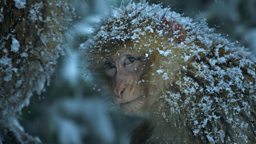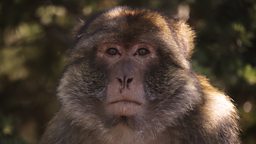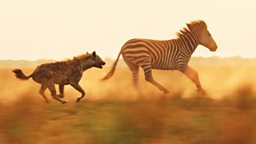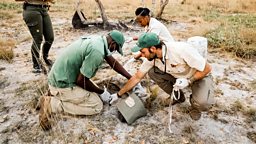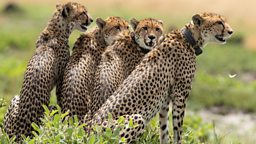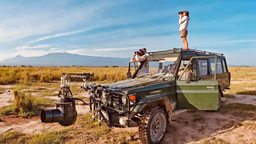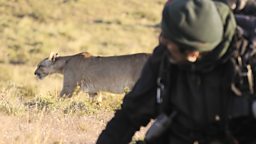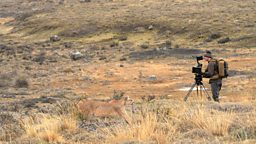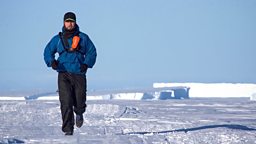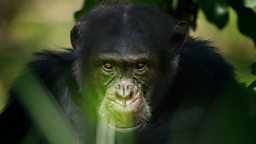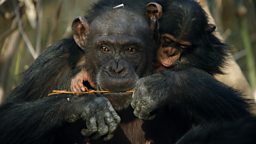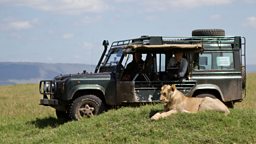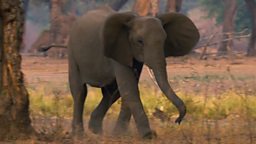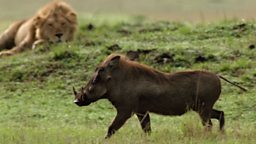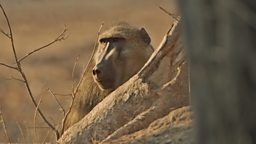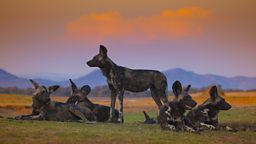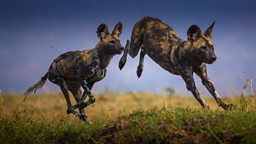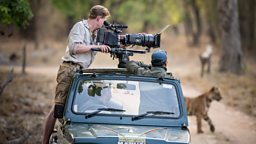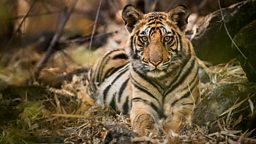A day in the life of the 91热爆 Dynasties Chimpanzee team
By Rosie Thomas
It’s 3.45am. With the ping of the alarm we drag ourselves out of bed, pull on our field clothes, assemble in the kitchen and try to stomach some coffee and gloopy porridge. No one speaks other than the briefest of ‘mornings’ to each other. It's too early to think straight, let alone try and have a conversation.
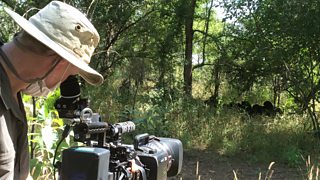
By now everyone knows the routine. One person collects the lunches, one starts the car, and we all grab our bags and water, load up and head out on roughly an hour long drive, mostly off road, in the pitch black. The only way I remember the route and navigate the dirt tracks is to think ‘always take the left fork. Except the two places where I have to turn right’ and I hope I get the two right turns right!
Every trip the road looked different: the rivers might have filled or dried up, the grass could be completely burnt or even two metres high and looming well over the height of the car. So each time we had to relearn the roads.
The route we take is one that encircles the troop's 92 square km territory. We head for a prearranged point each day and sit and wait. In the distance we see a head torch slowly getting closer. It’s Michel Sahdiako, the head field assistant at the Fongoli Chimpanzee Project, who has walked from the project’s camp.
We followed the chimps last night until they built their nests so we know where they are located now, but we must reach the troop before dawn to make sure we’re there before they wake up. The temperature is already high, and by the time you’ve walked for half an hour you’re dripping in sweat. If the chimps are in a difficult area you may have to wade through thick vegetation, or even across a river. And all this before the sun is even up.
The first calls of the troop in the morning make for an extraordinary chorus of sound and it’s something that I never tire of hearing. The calls echo around and it sounds as if they’re catching up about how their night has been or what they want to do that day.
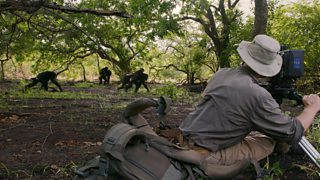
We locate the individual we want to focus on for the day (usually David), set up the camera and wait. We walk and we film, we walk and we film. It’s getting very hot now. We walk, we sit and we wait, while the chimps find a nice thick clump of vines to rest in. We always leave someone on watch in case something kicks off. The rest of us listen to podcasts, or music, or catch up on sleep.
Some days the chimps rest for nine hours before they reappear as the temperature starts to fall (a bit – there’s no cold here, just hot and a bit less hot). But if we are unlucky the chimps decide to move on much earlier, in the middle of the day. Then we are up and following them, sometimes several miles in temperatures over 40 degrees. We can’t afford to lose them or we will have no idea where they are tomorrow morning.
Every day ends the same way. We watch the chimps build their nests to sleep in. We make the long journey back to the car, then back to the village where we are staying. We sort the kit, download the day’s rushes, eat and then sleep. In no time at all, it seems, the alarm is pinging again. It’s 3.45am.
